Technology has long played a role in healthcare, from early medical devices to today’s advanced systems. However, the persistent challenge has been the lack of user-centered design. While technological tools have the potential to enhance patient care and streamline medical processes, their impact is often obstructed by designs that don’t account for the unique needs of healthcare users. As UX/UI designers at Arionkoder, we’ve witnessed firsthand how this shift challenges us to understand the unique nuances of the healthcare industry. Designing for healthcare is not just about aesthetics or functionality—it’s about understanding the diverse range of users who engage with these systems. From clinicians and caregivers to patients themselves, these users vary significantly in terms of demographics, technological access, age, and health literacy.
At the heart of healthcare design is simplifying how patients interact with services, profoundly impacting their care journey. Technology, especially AI, should empower patients and professionals alike, making healthcare more efficient and accessible.
This post explores the challenges we face when designing for the healthcare industry and how we address these obstacles of simplifying experiences for patients, caregivers, and medical professionals.
The Users
In healthcare, the diversity of users is vast, and understanding their specific needs is essential for creating effective solutions. We typically design for three main types of users: clinicians, patients, and caregivers.
Clinicians
Doctors, nurses, and medical assistants often rely on outdated systems, and adopting new digital tools can feel burdensome given their limited time. Our role as designers is to create systems that integrate seamlessly into their existing workflows, offering solutions that improve efficiency without disrupting their day-to-day tasks. We have a dedicated article exploring the Clinician as a key user in Healthcare.
Patients
This group is perhaps the most diverse and interesting, spanning various ages, health conditions, social groups, and educational backgrounds. There’s a large group of patients who aren’t experienced in regular smartphone usag. For them, basic tasks like browsing the web or navigating apps can be challenging. Designing digital solutions for users who live under these circumstances requires a focus on simplicity, accessibility, and usability. It’s essential to ensure that even those with limited technological experience can navigate, understand, and use healthcare apps and systems with ease.
Caregivers
Caregivers, whether family members or social workers, act as intermediaries between patients and healthcare providers, managing both health and patient data. For example, a family caregiver might need to keep track of medications, monitor vital signs, and relay updates to doctors, all while managing daily care activities. Designing for caregivers involves creating adaptable systems that can be accessed easily across different devices, like tablets or smartphones, and function effectively offline, ensuring caregivers can access and update patient information even in areas with limited connectivity.
Caregivers often face stressful situations, so simplicity and ease of use are essential. Systems must be intuitive, minimizing the time caregivers spend navigating through the interface, so they can focus on what matters most—caring for their patients. By supporting caregivers with intuitive tools, we can simplify how patients in truly difficult conditions experience their health.
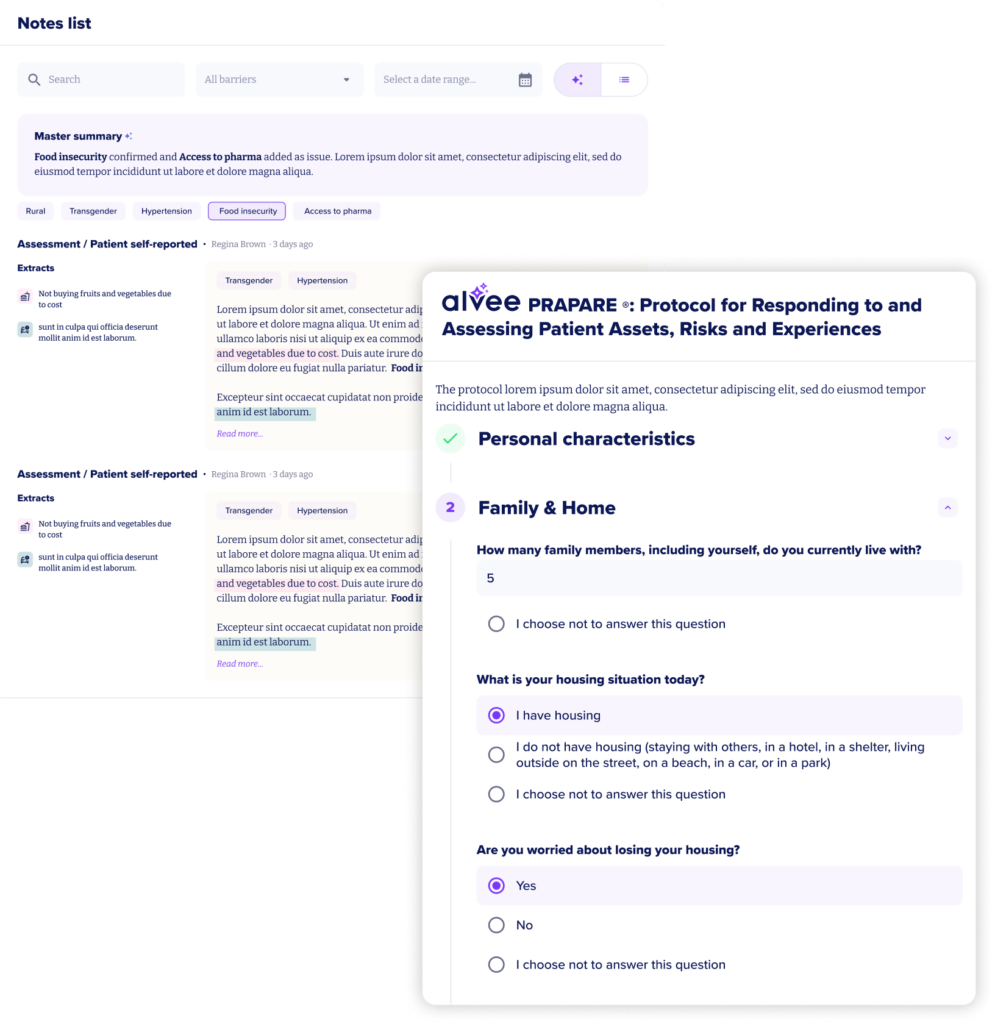
The Onboarding Process
One of our biggest challenges is creating an onboarding process that works for users with varied health and vision issues. Onboarding must be simple yet precise. Most of the time, patients need to provide data related to their current health condition and any diseases or allergies, as well as demographic data. If the onboarding process is too complex or overwhelming, it could deter users from fully engaging with the system. However, skipping vital information can lead to incomplete care records and possible misleading instructions in the future.
A well-executed onboarding process involves careful discovery to differentiate between essential and secondary information. Collecting critical data first and allowing users to provide additional details later can streamline the process and reduce friction.
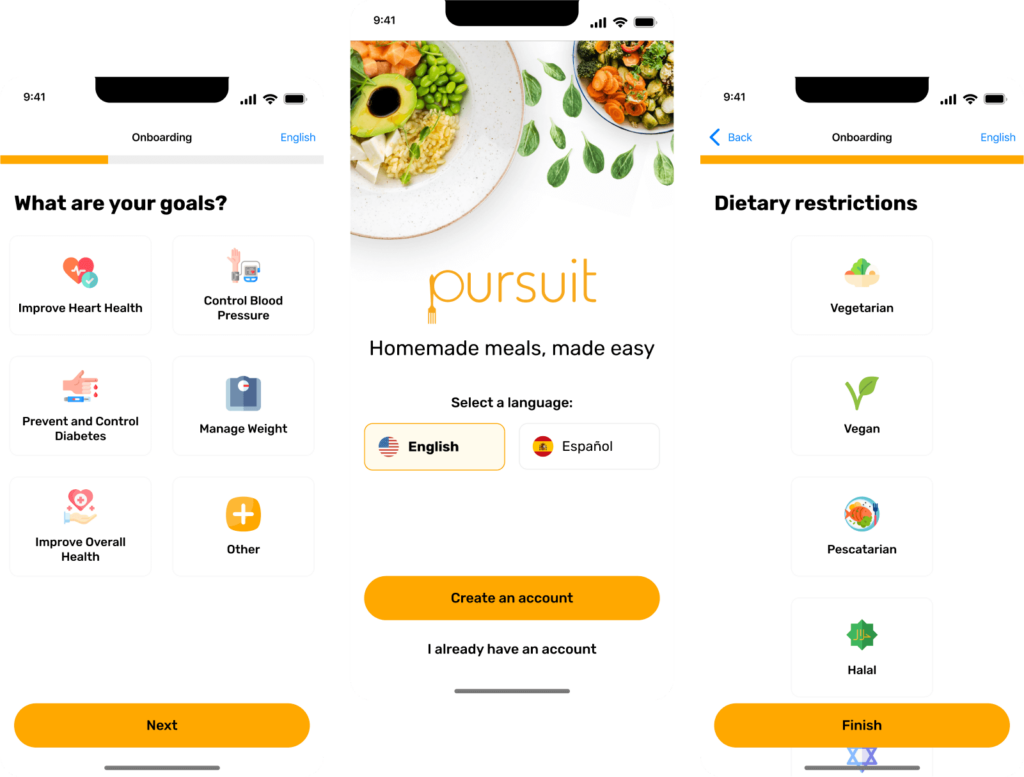
Precise Instructions
In healthcare, providing precise instructions is non-negotiable. The cost of an error can be incredibly high, impacting negatively a patient’s health and/or care. As designers, we need to ensure that the systems we create communicate precisely and clearly through copy and imagery, leaving no room for ambiguity. In cases where text, icons, or images are not enough, additional help and instructions should be provided through links to explain specific terminology or buttons to provide general help related to the content on screen.
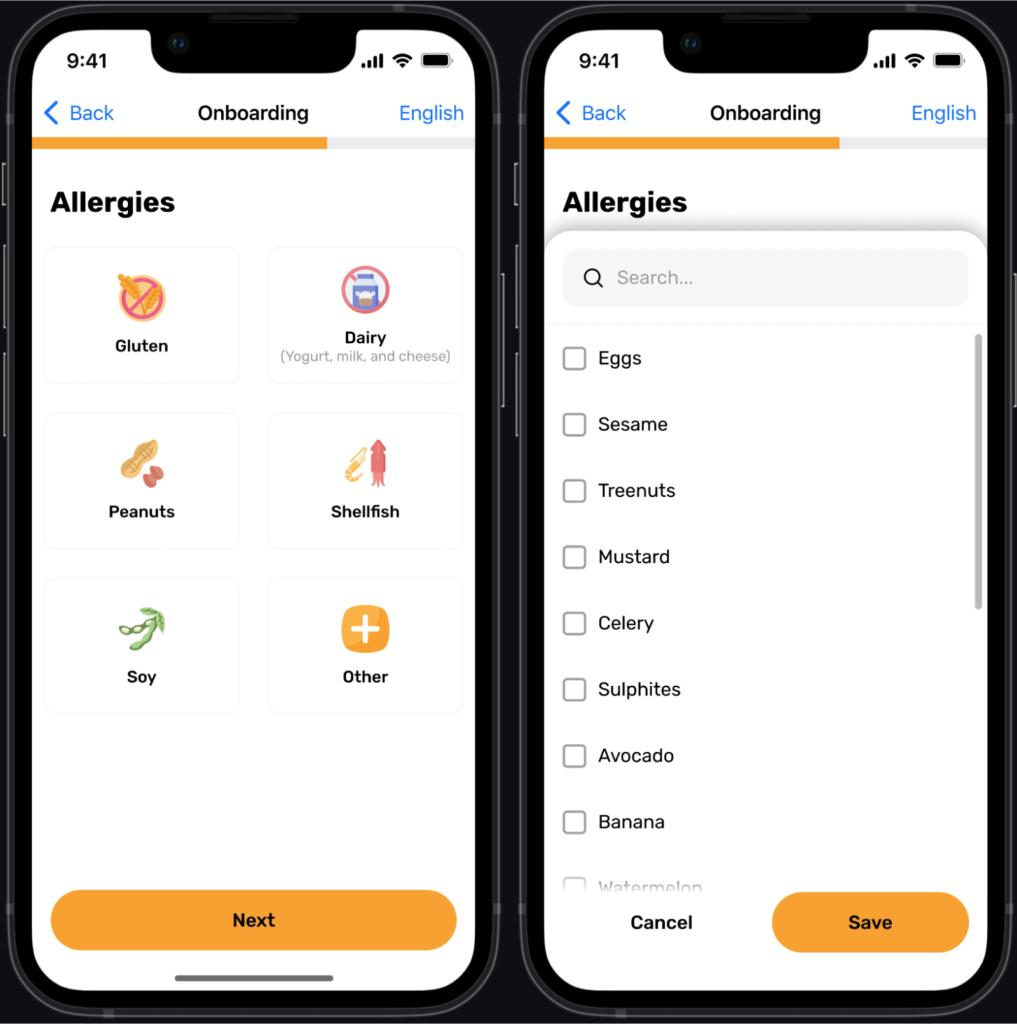
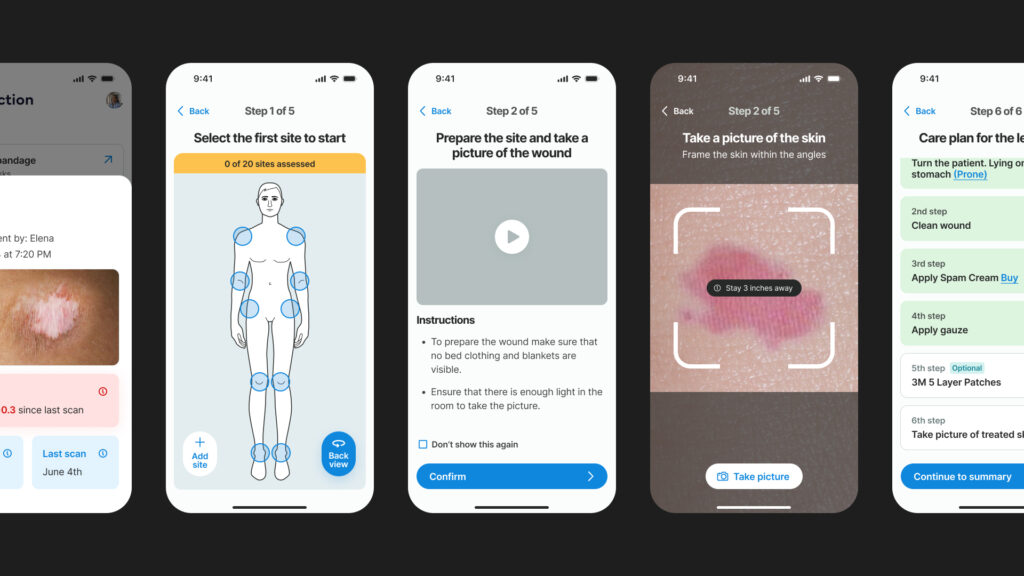
These instructions help experienced and inexperienced caregivers follow the same patterns when treating wounds, educating them with proper terminology and clear steps to follow.
Procedures & Real-Life Workflows
When designing tech tools for the healthcare sector, it’s essential to align digital solutions with real-life workflows. By understanding how medical professionals and caregivers interact with patients and data, we can create tools that are practical, efficient, and supportive of existing practices. A key element is ensuring that these systems integrate seamlessly with Electronic Health Records (EHRs), which are the backbone of modern healthcare operations. Effective integration avoids duplication of tasks and ensures smooth information flow. As highlighted in our Health Tech Guild article, proper EHR integration is crucial for real-time access to patient information, enhancing decision-making without disrupting workflows. Getting back to how this contribute with simplifying Health experiences for patients, we need to think of EHRs as part of the foundation: ensuring that tech tools integrate seamlessly with EHRs not only helps clinicians but also creates a smoother, more transparent care experience for patients, reducing delays and errors that can affect their health outcomes.
The Role of AI
AI transforms healthcare by augmenting, not replacing, human efforts. While it automates tasks like data entry and predicting patient needs, its true value is in supporting professionals. In an industry where human judgment, empathy, and adaptability are critical, AI should enhance clinicians’ abilities rather than automate away their work. AI tools that augment clinicians don’t just streamline their workflows; they simplify the entire patient experience, ensuring faster, more accurate care delivery while keeping the patient at the center.
At Arionkoder, we’ve integrated AI into several healthcare products with this principle in mind—ensuring AI acts as a tool for augmentation, not replacement. Whether it’s helping clinicians sift through large datasets for insights or enabling personalized care recommendations, AI should lighten workloads without taking clinicians out of the decision-making loop. This approach ensures that patient care remains human-centered, with technology empowering professionals to deliver better, more informed care.
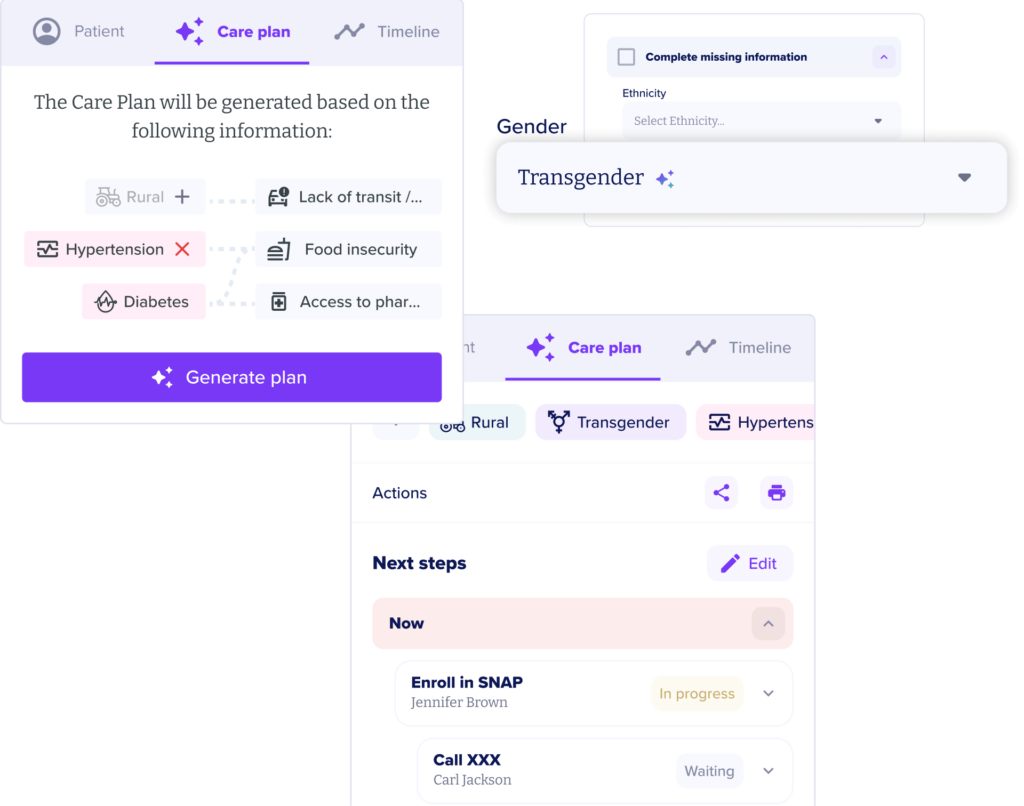
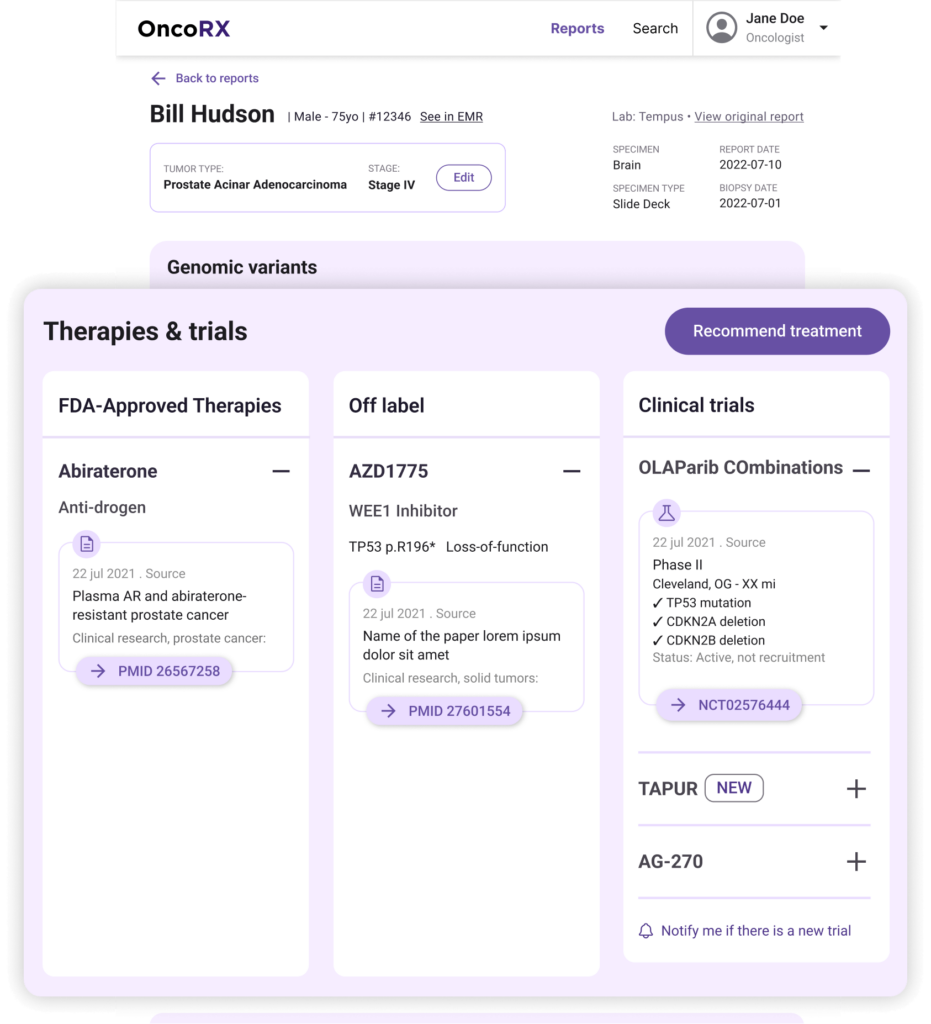
As we’ve explored in previous discussions, AI in healthcare must bridge the gap between potential and practicality, creating connected experiences that add value to every interaction. When designed with the user in mind, AI applications not only save time but also enhance the quality and accuracy of care, all while keeping clinicians at the heart of the process.
At Arionkoder, we believe in fostering innovation in healthcare through AI, but always with a human-centered approach. If you’re working on an AI solution that enhances patient care and streamlines processes, check out our Reshape Health Grants 2024. These grants offer health tech startups the opportunity to refine and elevate their AI designs for maximum impact.
Conclusion
Design in healthcare is about more than functionality—it’s about creating tools that empower users and improve patient care. Whether integrating AI to augment clinicians, simplifying interfaces, or supporting caregivers, the focus must always remain on simplifying how patients experience their health journeys.
At Arionkoder, we’ve seen that thoughtful, user-centered design allows technology to streamline workflows and improve outcomes without disrupting established practices. As healthcare continues to evolve, the future lies in creating solutions that help professionals do what they do best—care for their patients—through smarter, human-focused technology. Reach out to us at [email protected] to continue this conversation and help you transform your healthcare product!
